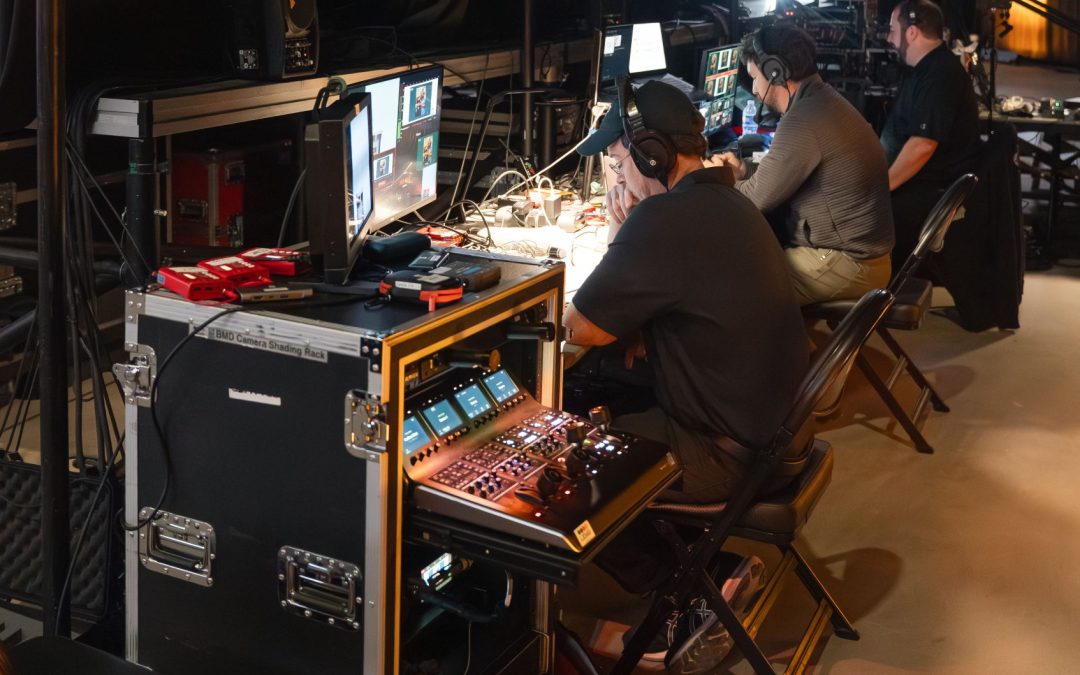If you’ve ever attended a large corporate function such as a conference, product launch, or all-hands meeting, you likely noticed a small army of people in dark clothing working quietly behind the scenes. These professionals rarely step into the spotlight, yet they are crucial to the success of any live event. Who are they and what exactly do they do to create seamless experiences for audiences?
This is the fifth and last installment of the AV Advantage series, offering a closer look at the unsung heroes of live production. Drawing from the expertise of Seth Macchi, CEO of an AV production company, this guide unpacks the roles, processes, and practices that help planners and organizers achieve near-flawless results.
The AV Team and Why They Matter
Behind every successful event is an AV team that ensures visuals, sound, lighting, and stage management run smoothly. Understanding their roles can make all the difference when building your event strategy.
Project Manager or Production Manager- The project manager serves as the main point of contact for the AV provider. They oversee planning, coordination, and on-site execution, aligning technical elements with the client’s vision. For planners, a strong relationship with this leader is essential because they transform ideas into reality and resolve issues from setup to teardown.
Audio Engineers- A1 (Lead Audio Engineer): Positioned at “front of house,” this individual runs the audio console, mixing microphones and other audio sources to deliver clear, balanced sound to the room, recordings, or livestreams. A2 (Assistant Audio Engineer): Typically found backstage, A2 manages microphones for presenters, ensuring they are ready and properly equipped at the right time.
Lighting Director (L1)- Based at “front of house,” the lighting director designs and operates the lighting system. They tailor looks for key moments, ensure the stage is properly lit for both audience and cameras, and adjust cues as needed during the show.
Technical Director or Show Caller- The technical director, often called the show caller, orchestrates all technical elements through headsets, directing the crew in real time. This role keeps the program on cue, coordinating video rolls, lighting changes, and audio adjustments.
Video Engineers and Camera Crews- Video engineers manage slides, live feeds, and pre-recorded media backstage. A camera director works with operators to capture the right shots for live magnification or broadcast.
LED Technicians and Electricians- These specialists assemble, operate, and monitor LED walls or complex lighting installations. Their expertise keeps screens sharp and functioning without interruption.
Stage Manager- When a schedule involves many presenters or intricate timing, the stage manager becomes invaluable. They coordinate between presenters and crew, guiding speakers to the stage and addressing last-minute needs.
Load-In and Load-Out Labor- Often unseen by attendees, these crews handle the physical setup and teardown, moving equipment into the venue, installing it efficiently, and clearing it out after the event.
From Proposal to Showtime
Knowing the team is one step. Understanding how they operate before and during an event ensures you get the best from them.
Load-In Day: Equipment arrives on site and is moved into place with the help of additional crew. Specialists then connect, assemble, and test systems, transforming an empty ballroom into a functioning production space.
Setup and Technical Checks: Departments test their systems: audio for clarity and feedback, video for functionality, and lighting for cues and effects. These steps reduce the risk of unwanted surprises during the show.
Dress Rehearsals: Rehearsals are often overlooked but are essential for speaker confidence. The AV team, led by the technical director and stage manager, walks presenters through microphone handling, stage positioning, and slide operation. Even short rehearsals can turn nervous speakers into confident presenters. For complex shows, scheduling a full day or more ensures every detail is covered.
Running the Show: When attendees arrive, the AV crew shifts into performance mode.
- The front of house staff monitors sound and visuals.
- The backstage crew prepares presenters and manages quick transitions.
- The show caller communicates cues and timing to ensure a seamless experience.
This coordination separates professional productions from amateur ones, ensuring the audience experiences a polished event.
Perfection in live events is rare. Changes, glitches, or nervous speakers are part of the process. However, preparation, flexibility, and strong communication allow AV teams to get as close to flawless as possible. Their ability to anticipate and resolve challenges often determines the overall success of the program. To maximize the value of your AV team:
- Engage them early in planning.
- Communicate your schedule and vision clearly.
- Schedule rehearsals whenever possible.
- Trust their expertise in equipment and logistics.
- Remember that proposals represent skilled professionals, not just line items.
Understanding your AV team and their processes is essential for any planner who wants consistently strong results. From load-in to the final sign-off, these professionals bring together technical skill, creativity, and precision. With proper preparation and collaboration, you can deliver live events that feel effortless and leave a lasting impact on your audience.
Interested in hearing more of the behind-the-scenes process? Tune in here:

